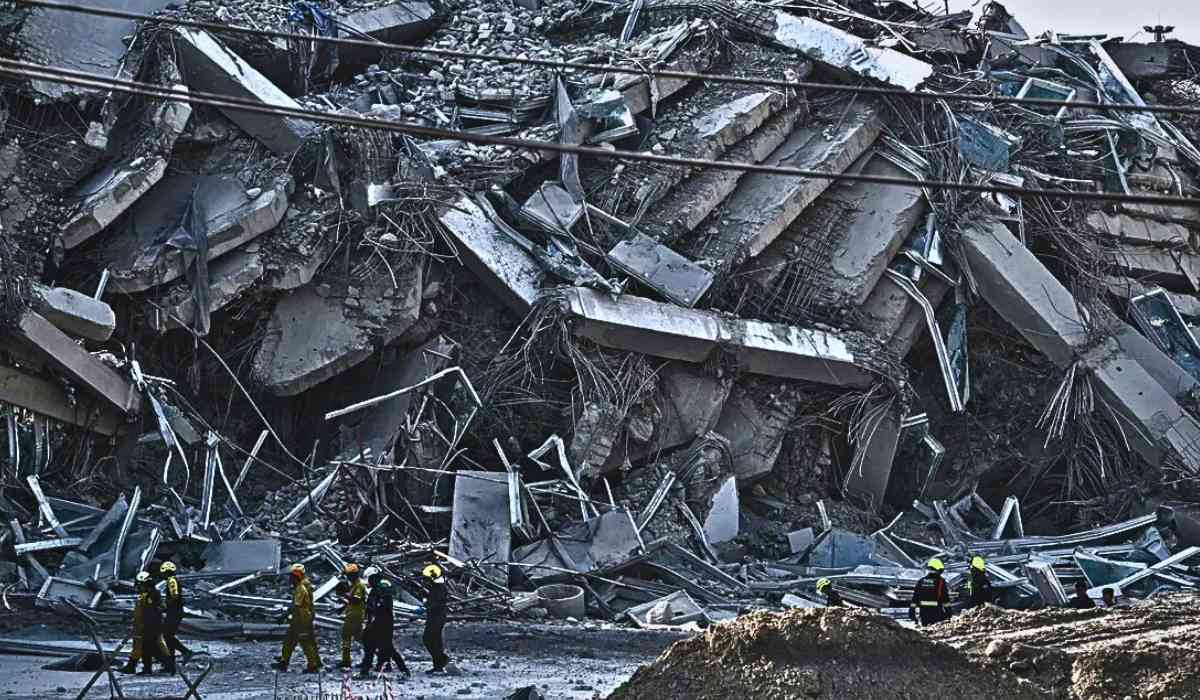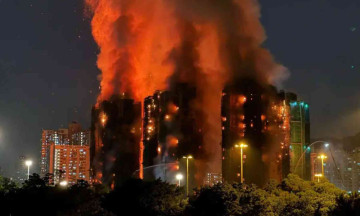On March 28, 2025, a devastating event unfolded in Bangkok, Thailand, when a 33-story skyscraper under construction collapsed following a powerful earthquake that struck nearby Myanmar. The earthquake registered a magnitude of 7.7 and caused significant destruction in both countries. In Bangkok, the collapse has raised urgent questions about building safety and the role of a Chinese construction firm involved in the project.

The Collapse and Immediate Aftermath
The building, intended to house the State Audit Office of Thailand, was situated on Kamphaeng Phet Road, close to the bustling Chatuchak Weekend Market. Witnesses reported hearing loud cracking noises just before the structure crumbled within seconds, sending debris flying into the air and trapping numerous workers beneath the rubble. As of March 30, at least 17 people were confirmed dead, while approximately 83 remained unaccounted for, most of whom were laborers working on the site.
Rescue teams have been tirelessly working to locate survivors amidst the wreckage. Despite challenging conditions, including intense heat and unstable debris, search efforts have utilized thermal imaging drones that detected signs of life in some areas. As rescuers continue their operations, hope remains for those who might still be alive beneath the collapsed structure.
Investigations into Construction Practices
In light of the tragedy, Thailand's Deputy Prime Minister Anutin Charnvirakul has ordered an immediate investigation into the building's collapse. This inquiry will focus on various aspects, including the quality of construction materials used and whether building codes designed to withstand earthquakes were followed. The skyscraper was a joint venture between Italian-Thai Development Plc and China Railway Number 10 (Thailand) Ltd., a subsidiary of a Chinese firm. Concerns have already been raised regarding the structural integrity of the building, as experts noted that other nearby constructions did not suffer similar damage during the earthquake.
Reports indicate that engineers had previously expressed worries about rapid construction schedules and potential inadequacies in materials used for the skyscraper. The investigation aims to determine if these factors contributed to the catastrophic failure.

Public Reaction and Safety Concerns
The collapse has sparked fear among Bangkok residents about living and working in high-rise buildings. Many people rushed out into the streets during the earthquake, seeking safety from potential structural failures. Kanittha Thepasak, a local resident who experienced the tremors firsthand, expressed her anxiety about returning to her workplace on the 29th floor of another skyscraper. "I'm scared," she said. "Thai people generally lack a fundamental understanding of earthquakes since we rarely encounter them".
As rescue efforts continue, families of those trapped under the rubble are holding onto hope for news about their loved ones. Some have gathered at the site, praying for their safe return while grappling with uncertainty and fear.
The Broader Context: Myanmar's Earthquake Impact
The earthquake that triggered this disaster has had dire consequences beyond Thailand's borders. In Myanmar, it has claimed around 1,700 lives and injured thousands more. The epicenter was located near Mandalay, Myanmar's second-largest city, where extensive damage occurred to buildings and infrastructure. The tremors were felt across central Thailand, leading to concerns about how prepared cities like Bangkok are for such natural disasters.

Experts have noted that shallow earthquakes like this one can cause more intense shaking at the surface level. Dr. Rebecca Bell from Imperial College London explained that this particular quake's force was equivalent to "334 atomic bombs," emphasizing its severity.
Conclusion
The collapse of the Bangkok skyscraper serves as a tragic reminder of the importance of stringent safety standards in construction practices, especially in earthquake-prone regions. As investigations unfold and rescue efforts continue, both Thailand and Myanmar face significant challenges ahead in addressing safety concerns and rebuilding trust in their infrastructure systems.
This incident not only highlights immediate safety issues but also raises broader questions about urban planning and disaster preparedness in rapidly developing regions. As communities come together to support those affected by this disaster, it is crucial for authorities to learn from this tragedy to prevent similar occurrences in the future.
With inputs from agencies
Image Source: Multiple agencies
© Copyright 2025. All Rights Reserved Powered by Vygr Media.


























